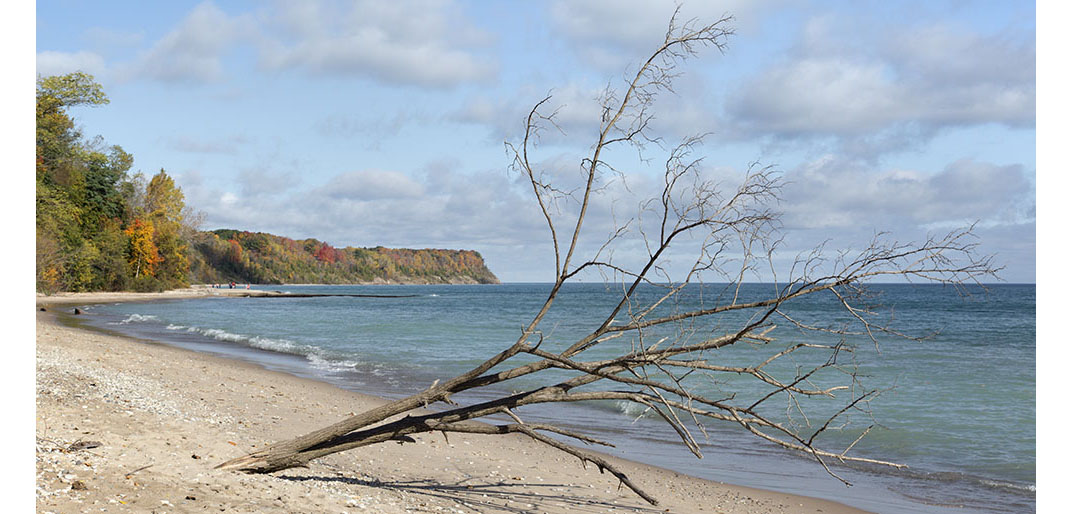
Seven Natural Wonders of Milwaukee
April 1, 2024 | Topics: Places, Spotlight
By Eddee Daniel
Come walk with me and we shall see something wondrous! A place so beautiful and breath-taking we shall be transported….
Does that sound like the opening lines to a children’s tale involving talking animals? If so, it may be because the sense of wonder is so often associated with the innocence of childhood. But for those of us who try to make it part of a regular practice as adults, I’m happy to say that Milwaukee and its environs provide plenty of opportunities for it.
When we think of “natural wonders” our minds may drift immediately towards majestic mountains, cavernous canyons, towering waterfalls and the like. While those kinds of natural phenomena make up the majority of entries on the numerous lists of “wonders of the world”—which tend to come in sevens—we needn’t venture that far from home. The flutter of a butterfly’s wings or the scent of wild orchids can instill in us similar feelings of wonder and astonishment, if we but attune ourselves to them. In fact, having places where we can experience these things close to home in an urban region is a wonder in itself.
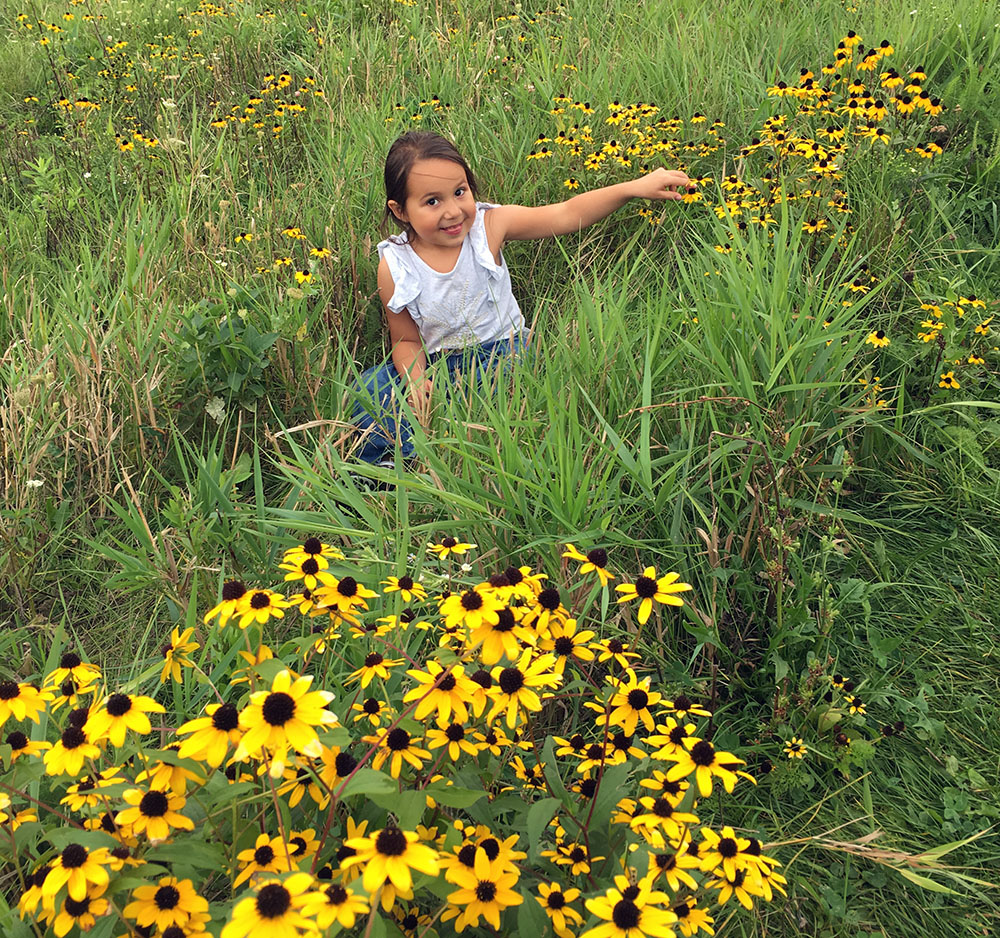
Here’s what Rachel Carson wrote in her book on the subject, The Sense of Wonder:
“If I had influence with the good fairy who is supposed to preside over the christening of all children, I should ask that her gift to each child in the world be a sense of wonder so indestructible that it would last throughout life, as an unfailing antidote against the boredom and disenchantments of later years, the sterile preoccupation with things that are artificial, the alienation from the sources of our strength.
“If a child is to keep alive his inborn sense of wonder without any such gift from the fairies, he needs the companionship of at least one adult who can share it, rediscovering with him the joy, excitement and mystery of the world we live in.”
The metropolitan region of southeastern Wisconsin is blessed with a wealth of nature, as followers of this blog well know. Which makes the selection of seven somewhat fraught. Once you get past a couple of obvious choices—Lake Michigan and the Ice Age Trail are fairly indisputable—a measure of subjectivity creeps in. In narrowing my list down to seven I found myself stewing and second-guessing about a few that didn’t make the cut.
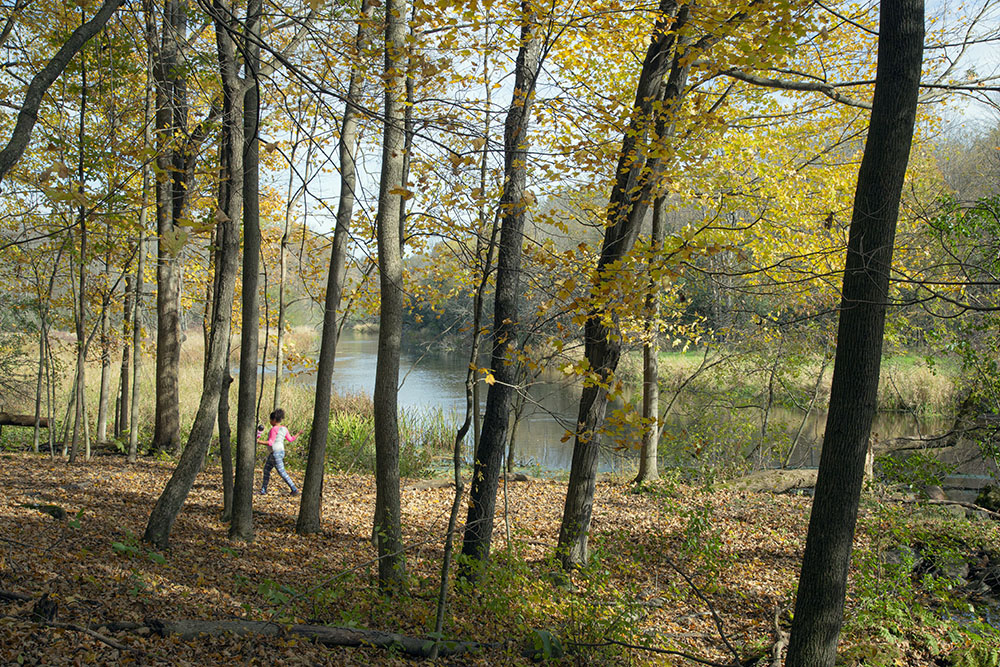
Why limit myself to seven, you might ask. Mainly to be in keeping with the tradition. But also so that this blog post wouldn’t get too long! (The number seven does have a definite cachet—one based, it seems, in psychology. An article in Psychology Today identifies 7 Reasons We Like 7 Reasons.)
I decided right away that the places on the list would be chosen for their natural characteristics and ecological importance, as opposed to parks with human-made or cultural attractions. Therefore, I eliminated the Domes, for example, and the few places where you can still find Indian mounds, such as Lizard Mound State Park. I also did not include places inaccessible to the public, such as certain paleontological sites. They can’t instill a sense of wonder if you cannot (or should not) go there. All of the selected seven are less than an hour’s drive from Milwaukee.
And so, without further ado, come walk with me and we shall see something wondrous!
Seven Natural Wonders of Milwaukee
Lake Michigan
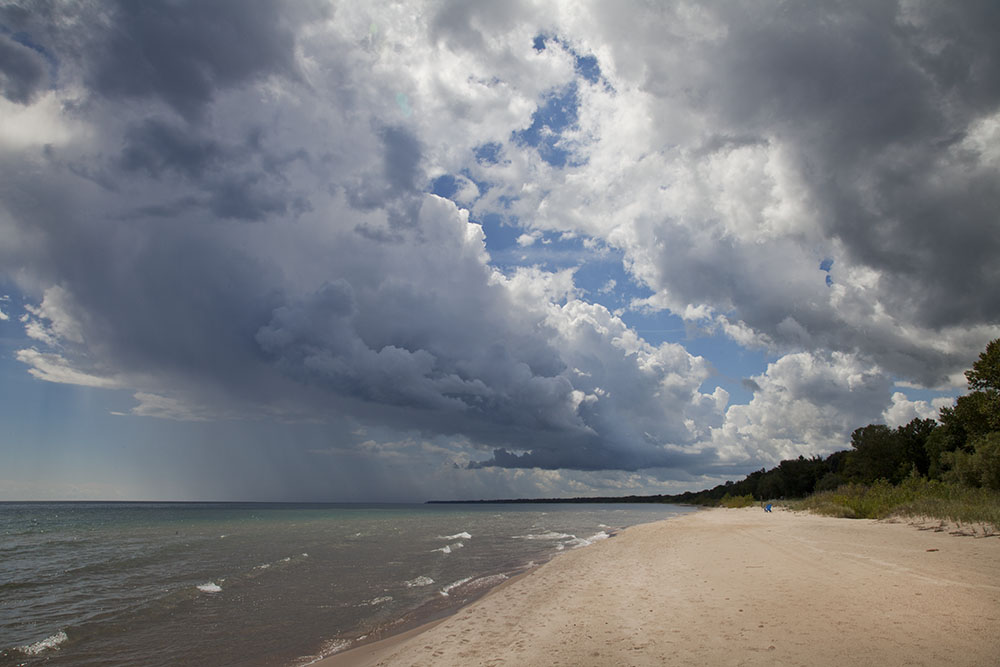
Some prefer to call it an inland sea. It is the second largest Great Lake by volume and the only one entirely within the United States. It is far too large for Milwaukee to claim for itself, but it’s presence and its “lake effects” here are inescapable. Large enough, in fact, to experience a tide-like effect called a seiche. Its immensity can be felt anywhere along the shore, but in order to experience its raw, nearly oceanic, power try visiting McKinley Beach on Milwaukee’s lakefront during a gale with northeasterly winds. The surf battering the breakwaters there can be stupendous. Don’t stand too close!
In calmer weathers you can enjoy the many sandy beaches and forested parks all along the coastline from Harrington Beach State Park in the north to Kenosha Dunes near the Illinois border. (See our Find-a-Park map to find more of them!) If you’re an early riser, take a stroll along any of the beaches at dawn. Few sights in the region can compete with the sun rising out of Lake Michigan and sweeping across that endless expanse of water and sky.
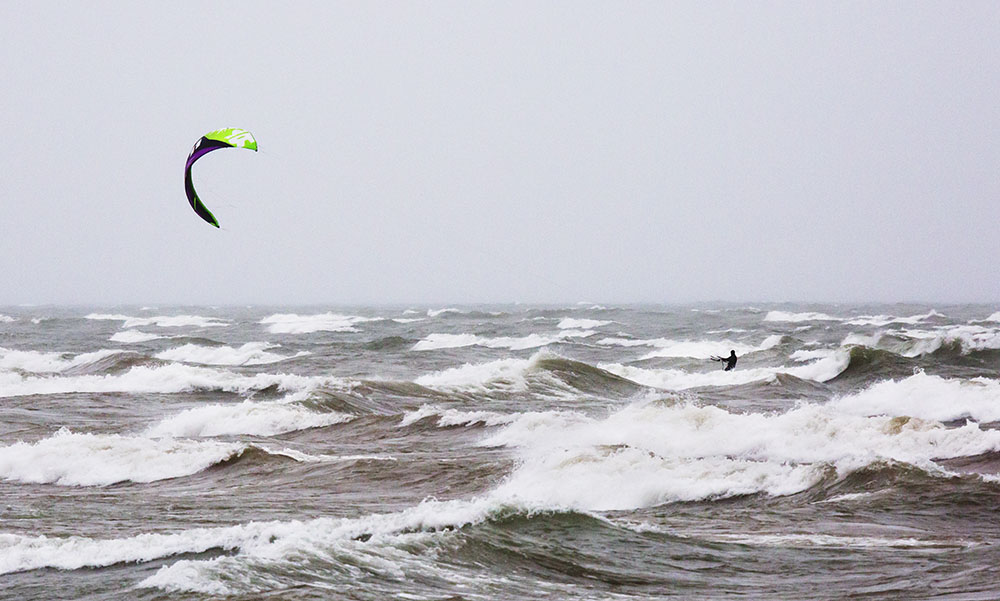
Related stories:
Wild winter surf on Lake Michigan
20 of the Best Beaches in Wisconsin
Winter is Lake Michigan’s showiest and finest hour
The Ice Age National Scenic Trail
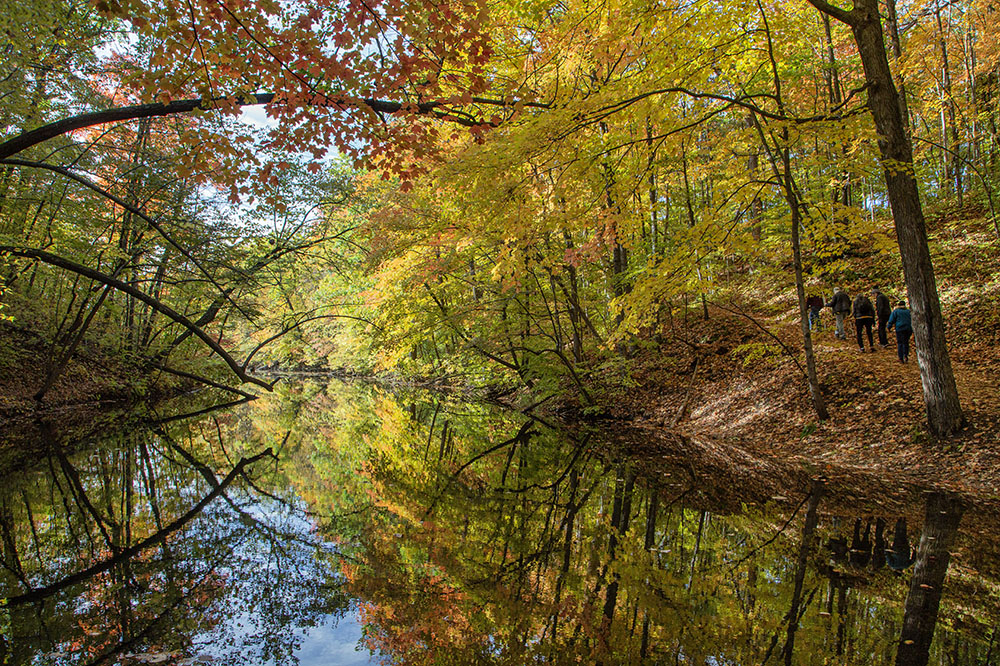
Lace up your boots and get ready to explore terminal moraines, eskers, kettles, drumlins and kames, the convoluted topography sculpted by mile-high glaciers. We are blessed with some of the finest examples of these glaciated landforms in the world. The premier hiking trail in Wisconsin traces the edge of the last glacier for over 1,000 miles, meandering through much of the state. While that makes it a magnet for long-distance hikers, it is divided into manageable segments that make it just as perfect for day trips. In any season, you’ll be hiking through some of the most beautiful landscapes in the state.
The trail doesn’t quite reach Milwaukee County, however many segments of it cross nearby Washington and Waukesha Counties. The trail runs through five units of the Kettle Moraine State Forest: Northern, Southern, Lapham Peak, Pike Lake, and Loew Lake. Segments also run through Hartland Marsh Preserve, Monches, Holy Hill, Cedar Lake/Polk Kames Preserve and Glacial Blue Hills Recreation Area. Most of the segments are appropriately rugged, but if your taste is for a short, easy, mostly level walk through one of the more stunning terrains it’s hard to beat Ridge Run Park.

Related stories:
Celebrating the Ice Age Trail in Southeastern Wisconsin!
Autumn Splendor on the Ice Age Trail – Milwaukee River Segment!
Hiking Hartland Marsh and the Ice Age Trail
The Milwaukee River Greenway
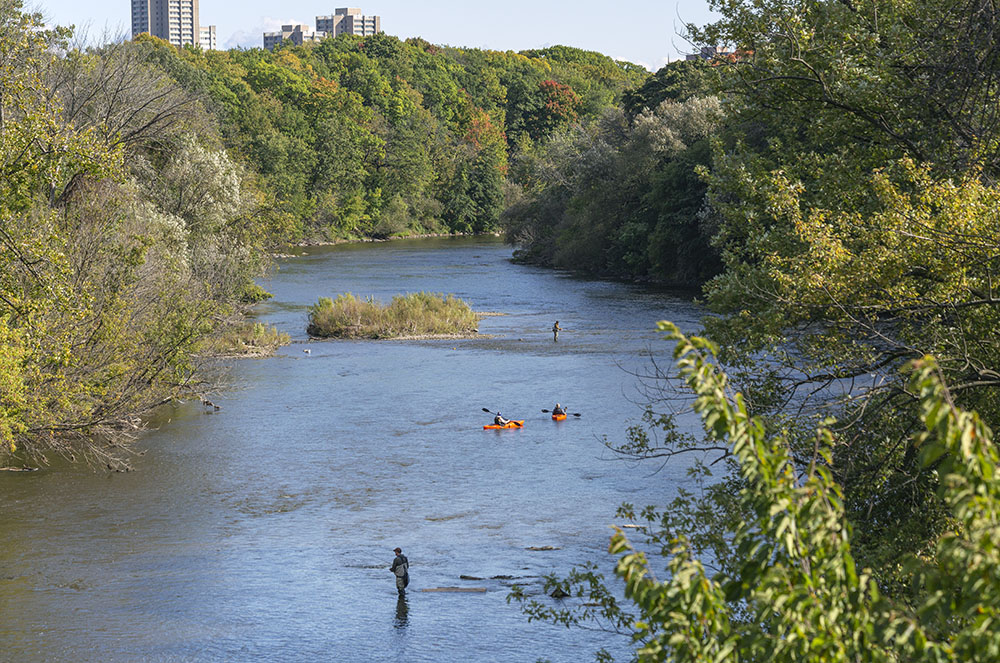
Imagine walking beside a river on a recreational path that winds eight river miles from Lincoln Park right into downtown Milwaukee. Cool river water bubbles over rocks through protected parklands, drawing neighborhoods and communities together. Imagine nearly 900 acres of natural lands and parks, a river valley sheltered by forested bluffs, a refuge for wildlife—beavers, foxes, warblers, great blue herons, steelhead, and sturgeon—all within the heart of the city. If you’ve been to the Milwaukee River Greenway you know this isn’t anyone’s imagination. It is an authentic, unique treasure waiting for you to explore.
The Greenway is laced with twenty-eight miles of trails, including rugged dirt tracks and the accessible, paved Oak Leaf Trail. It ties together twelve named parks, each with its own identity and natural character. For the best way to experience how wondrous it is try kayaking or canoeing the length of it. As you drift with the current you may forget for a while that you’re even in a city at all.
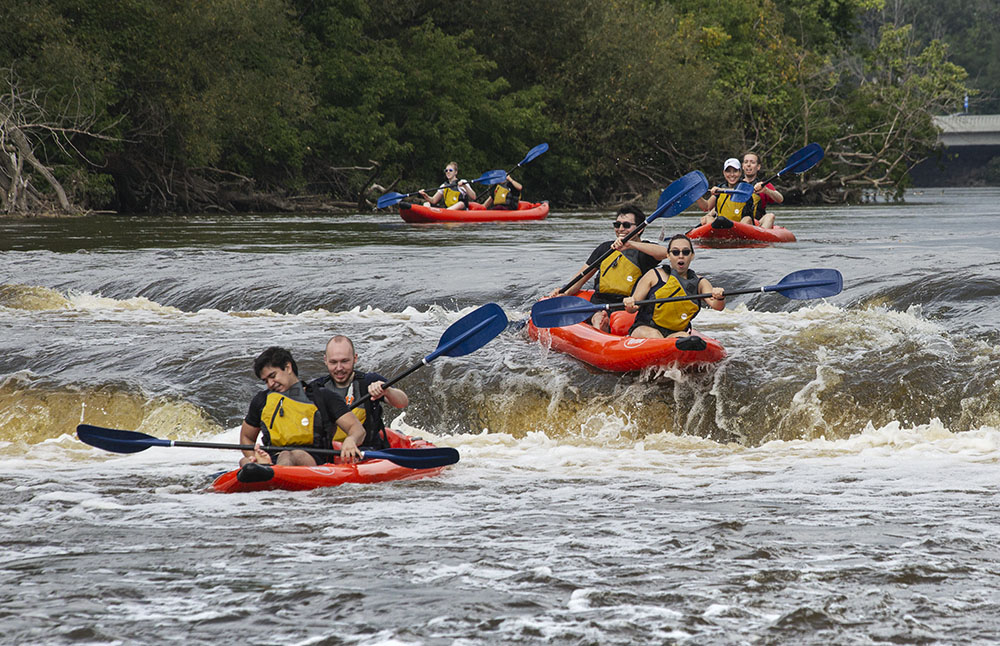
Related stories:
The Milwaukee River Greenway: A Wealth of Nature in the Heart of the City
The Milwaukee River Greenway in White!
An Historic Return to the Milwaukee River and Indigenous Roots
Nature and Community: A Winter Walk in the Milwaukee River Greenway
Fun and Adventure on the Milwaukee River at Estabrook Falls
More information about the Greenway on our Find-a-Park Page.
String of Pearls: Milwaukee County’s south shore
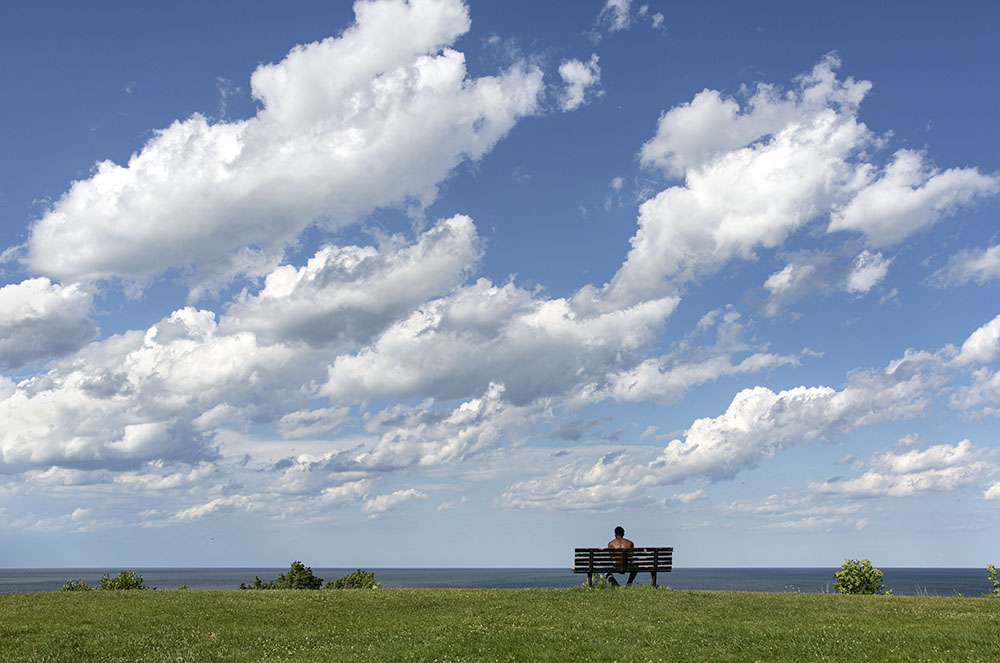
Now imagine standing on a sandy Lake Michigan beach beneath a towering bluff where the only sounds you can hear are the wind in your ears and the susurration of the surf. Within minutes of downtown Milwaukee you can be immersed in nature so totally that there is no sense of being anywhere near the most densely populated region in Wisconsin. And the beach is just the beginning! The “string of pearls” is made up of seven mostly contiguous parks stretching along the tall bluffs of the lakeshore from the downtown Harbor District to Oak Creek Parkway in South Milwaukee.
As with the Greenway, each of the seven parks has its own character. But all are tied together, not only because of the magnificent lake views, but also by nearly twelve continuous miles of off-road, paved Oak Leaf Trail. “String of Pearls” is not an official designation, but a riff on the familiar use of the term “Emerald Necklace” to describe the way the Milwaukee County Parks System parkways are organized along rivers. In both cases, their continuity makes for both stronger habitats for wildlife and a greater sense of freedom and wonder for people who recreate there.
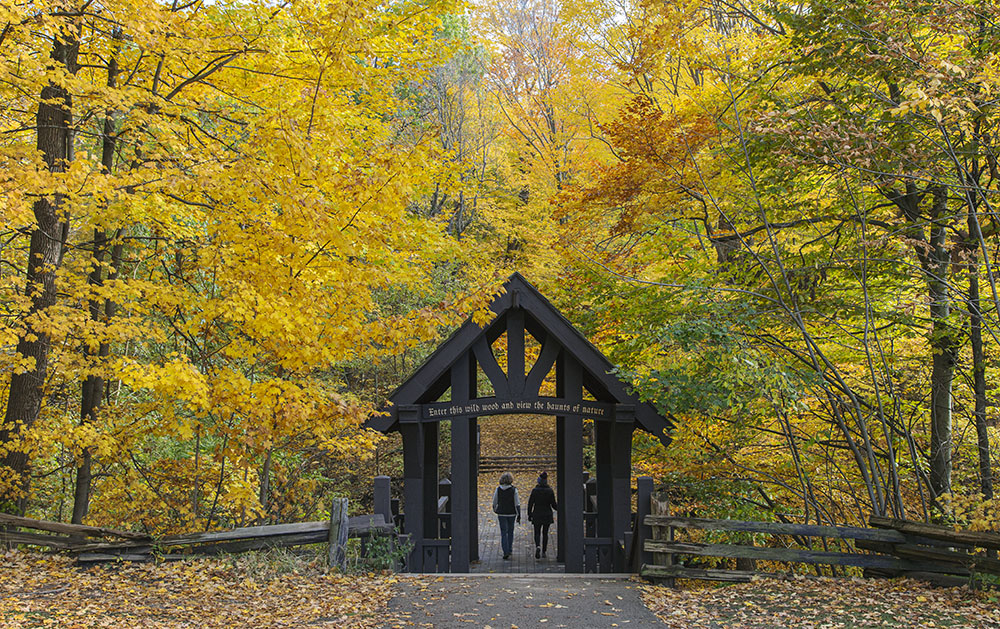
Related story and park information pages:
String of Pearls: Milwaukee County’s south shore parks
Cedarburg Bog State Natural Area
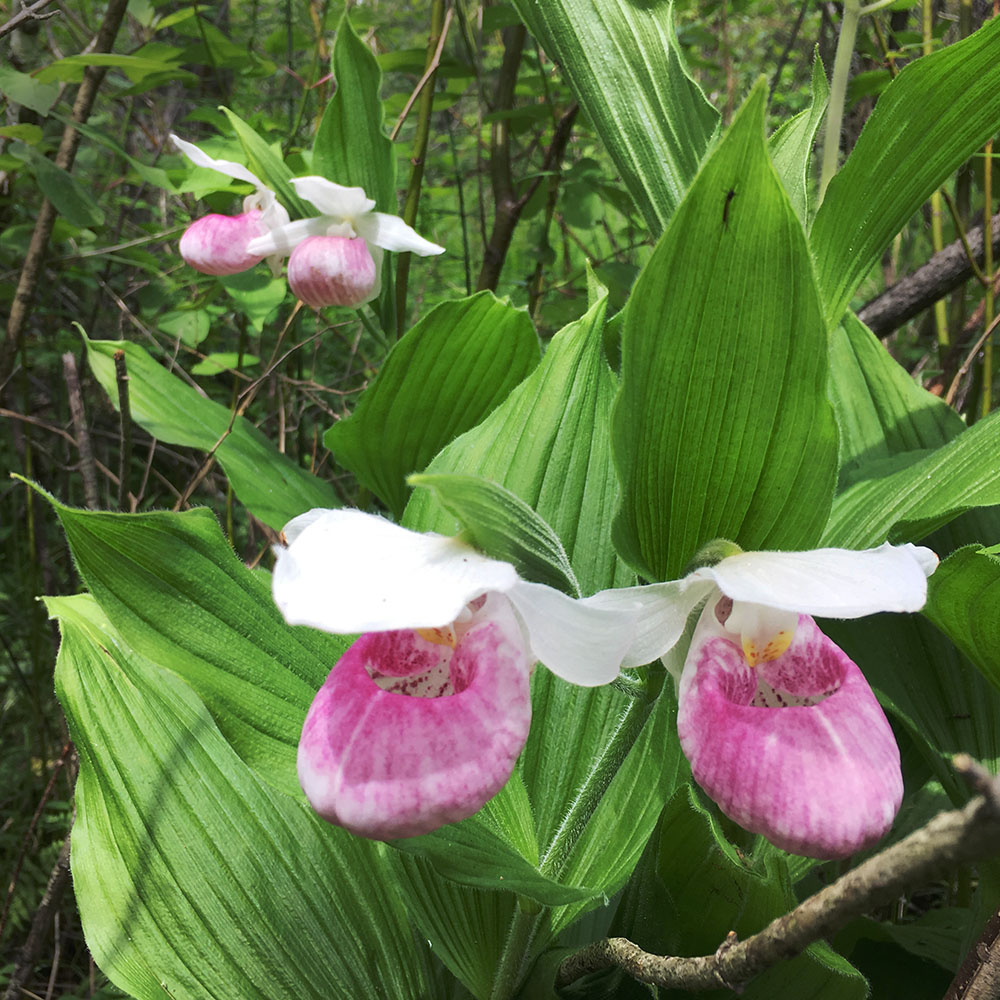
Where can you go to find carnivorous pitcher plants, extravagant lady-slipper orchids, northern watersnakes, Blanding’s turtles, three kinds of salamander, and more frogs than you can imagine? These and many other species of plants and animals inhabit the Cedarburg Bog. At 2,200 acres, it is one of the largest and most diverse wetlands in southern Wisconsin and is more typical of wetlands found much farther north. Cedar-Tamarack and hardwood swamps, deep and shallow marshes, several bog lakes and a patterned peatland or “string bog” make this area unique.
But wait, it’s a bog. How can you go there? There are two public access points, at the north and south ends of the preserve. Each involves a short boardwalk. There is also a boardwalk through the middle of it that is managed by the UWM Field Station, which opens it for special events. Friends of the Cedarburg Bog also provides opportunities to visit, including my favorite: a winter hike through the middle of the frozen bog to places that are otherwise completely inaccessible! (To humans, that is.)
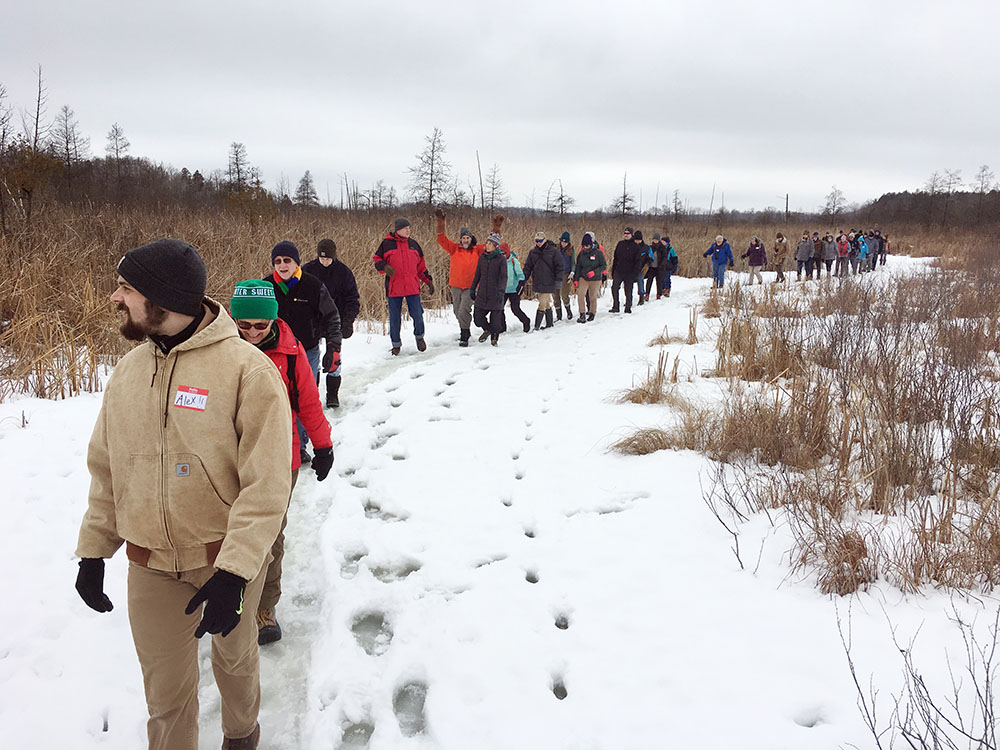
Related stories:
A Winter Walk in the Cedarburg Bog.
Butterflies, Dragonflies, and Damselflies at Cedarburg Bog.
A Walk in the Wilderness of Cedarburg Bog!
More information about the Bog on our Find-a-Park Page.
The Monarch Trail
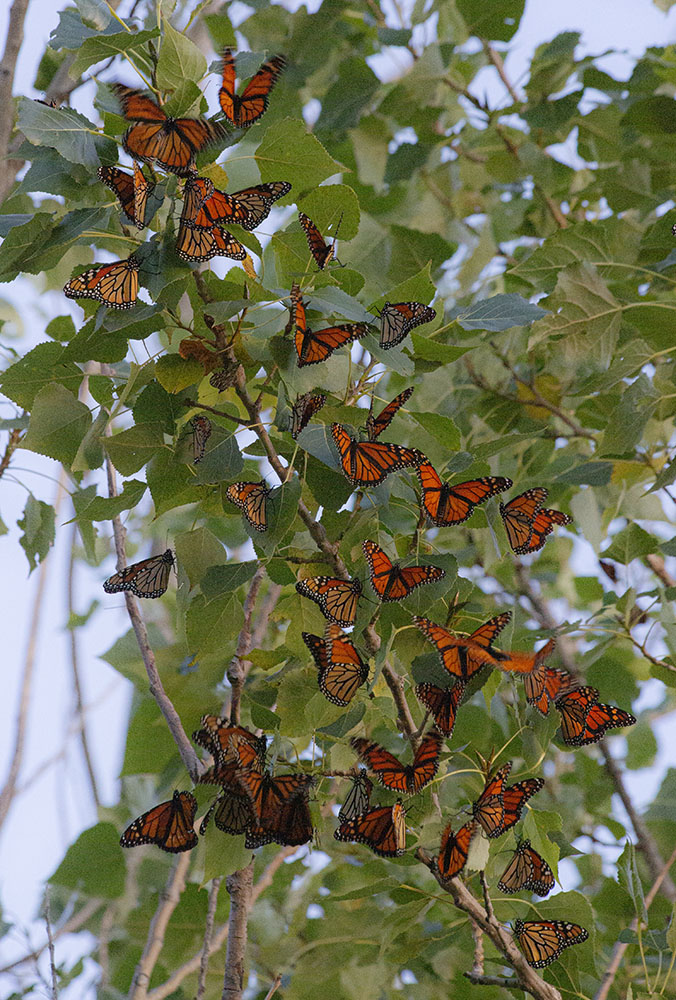
Now imagine this: A broad hillside awash in wildflowers. Dense patches of blossoming boneset, interspersed with gleaming goldenrod and tall sawtooth sunflowers, bounce and sway in the wind. As you stroll up a path into the midst of the flowers, a veritable cloud of monarch butterflies begins to rise around you and transforms the merely beautiful into something far more wondrous and magical. That it all takes place within a narrow ribbon of protected land squeezed between a row of apartment buildings and a freeway makes it all the more remarkable.
The monarchs were here first. They stop on this hilltop, one of the highest points in Milwaukee County, due to a confluence of auspicious circumstances that happen in few other places in the region. They require the right trees, the right kinds of wildflowers, and access to water in order to find places to roost on their annual 3,000-mile migration from Canada to Mexico. When they do they roost in the thousands, which is an incomparable spectacle to see anywhere in the wild, let alone in the middle of a city!
Being able to witness this remarkable phenomenon requires a bit of luck—the timing depends upon the weather and annual variations in the numbers of migrating monarchs—and a whole lot of diligence and effort by Friends of the Monarch Trail. Sign up on their website for alerts. The Monarch Trail is just a small portion of the vast Milwaukee County Grounds in Wauwatosa (so even if you miss the monarchs at least you have plenty of more opportunities to enjoy a wealth of nature there.)

Related stories:
Monarch migration underway on Milwaukee County Grounds in Wauwatosa
More information about the Milwaukee County Grounds on our Find-a-Park page.
Milwaukee Harbor and estuary
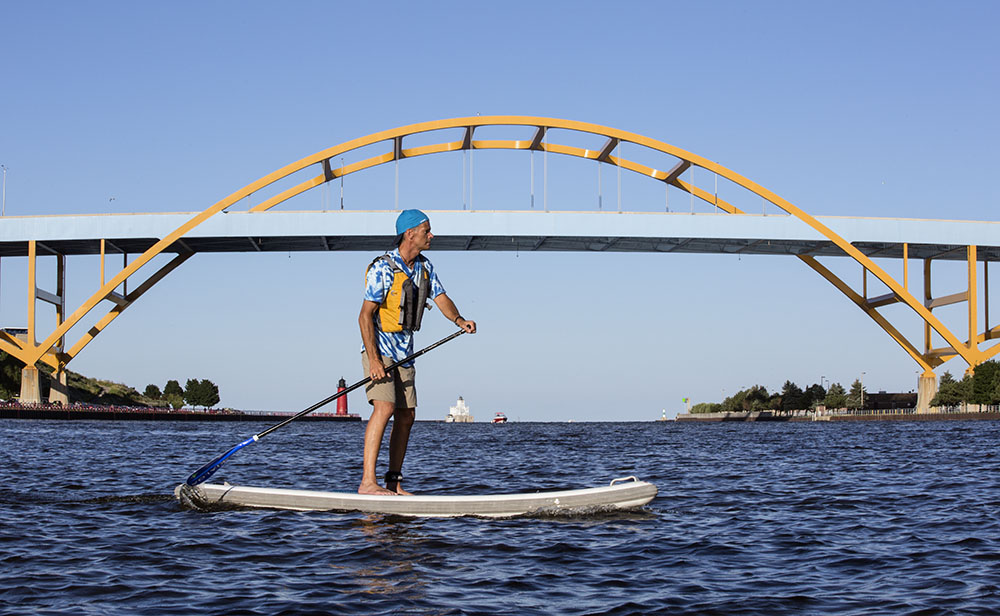
I hesitated over this choice. After all, there is little that’s natural left anywhere around the estuary today. But its significance as a waterway remains. The City of Milwaukee—and hence the whole metro region—owes its existence to the best natural harbor on the western shore of Lake Michigan. Its significance preceded the arrival of European colonial settlers, when the exceptional fertility of the estuary with its vast wild rice marshes and abundant wildlife provided sustenance for centuries of indigenous inhabitants.
The harbor remains important to commerce and the region’s economy. Following nearly a century of steadily increasing pollution, the water quality in the rivers that feed the estuary has improved to the point that it is now a magnet for recreational boating of all kinds. Clean up efforts continue. A major EPA “Area of Concern” project is currently underway through its Great Lakes Restoration Initiative. Locating the UWM School of Freshwater Sciences on the Inner Harbor helped symbolize the renewed regard for the value of the estuary.
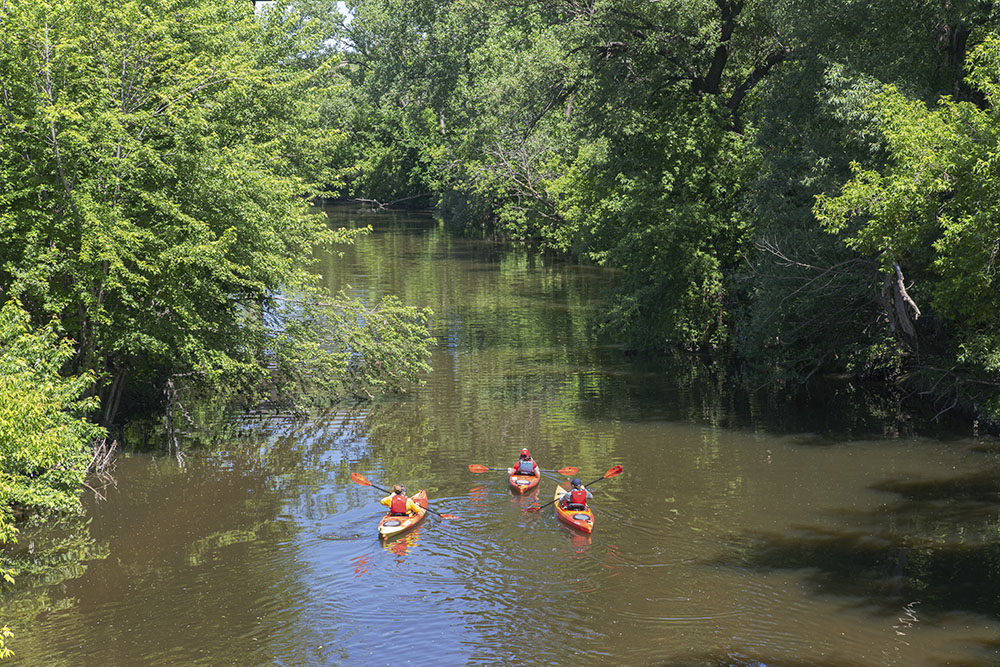
The highly successful Milwaukee Riverwalk has encouraged residents, visitors and businesses to appreciate the estuary as a recreational asset. Similar revitalization efforts are underway along the Menomonee and Kinnickinnic Rivers. Through the efforts of many agencies, businesses, and organizations, such as Menomonee Valley Partners, the Urban Ecology Center, Friends of the Hank Aaron State Trail and the WI DNR, two new parks have been created at opposite ends of the estuary. Three Bridges Park, created on a former railroad yard, is located on the Menomonee River at the upper reaches of the estuary; and Lakeshore State Park sits atop a newly created island in the Outer Harbor.
Related stories:
Downtown Milwaukee’s river of kayaks
Annual Milwaukee Riverkeeper Boat Parade rocks Milwaukee River
Scenes from Milwaukee’s Three-in-One Festival! (Harbor Fest/Sturgeon Fest/Boat Parade)
Unique New Maps Show What’s in Milwaukee’s Harbor
Groundhog Day at Lakeshore State Park!
Phenology at Lakeshore State Park
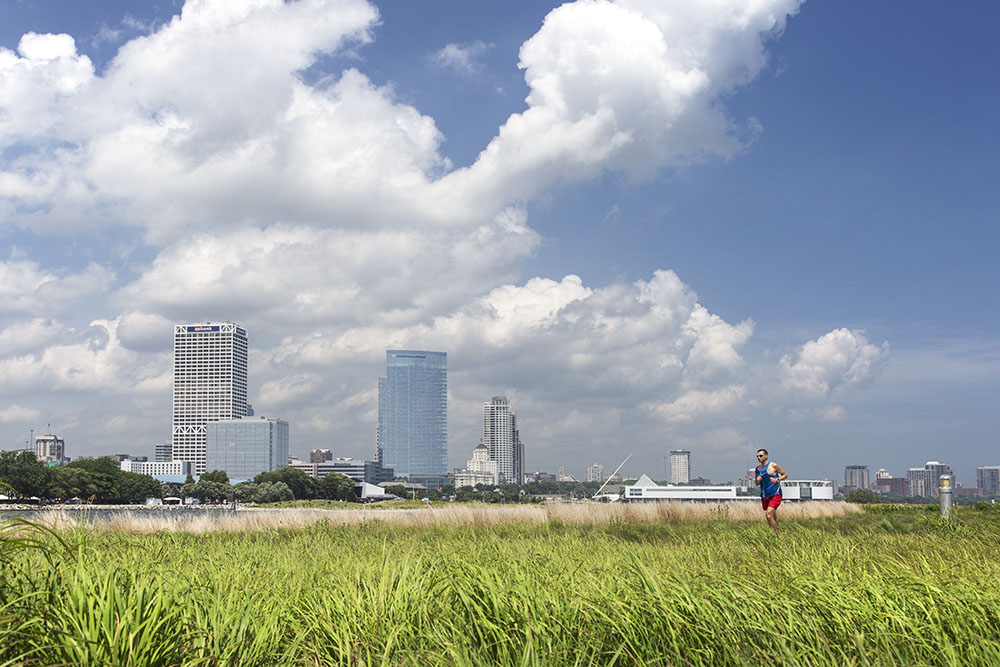
There you have it, my seven picks for outstanding natural features that enhance the quality of life in the Milwaukee metropolitan region and provide innumerable opportunities for recreation and nurturing your spirit and sense of wonder. You can set aside your bucket list of Wonders of the World and stay close to home for these local natural wonders.
But wait! There’s more. Innumerable doesn’t begin to describe the wondrous wealth of opportunities we have to enjoy nearby nature. You might very well choose a few different ones for your seven wonders. Find more with our Find-a-Park map. And please…. Please support your local parks and help preserve precious natural places.
Note: The featured image at the top of the page is of the beach at Grant Park and the one of the young girl amidst wildflowers is from The Monarch Trail. The links throughout the story will take you to additional stories and pages about the Natural Wonders of Milwaukee.
Eddee Daniel is a board member of Preserve Our Parks; former board member of Milwaukee Riverkeeper and Friends of the Hank Aaron State Trail; a member of the Urban Ecology Center and Ice Age Trail Alliance; a former artist in residence for Menomonee Valley Partners, the Harbor District, and in the Milwaukee River Greenway for River Revitalization Foundation.
Milwaukee Riverkeeper, Friends of the Hank Aaron State Trail, Urban Ecology Center, and Milwaukee County Parks are all project partners of A Wealth of Nature.
9 thoughts on "Seven Natural Wonders of Milwaukee"
Comments are closed.


Good choices, Eddee! I always love your photos and posts.
A great idea… Hopefully more such places can be long protected…and appreciated.
Eddee, Terrific photos as usual.
Bravo, Eddee!
ALL of your choices were awe-inspiring.
As a native-born Milwaukeean, who hasn’t lived there for nearly half a century, I was impressed with the natural beauty of my original home. Your efforts to reveal a “wealth of nature” are much appreciated! I loved every place… but the MONARCH TRAIL RULES!!!
Thanks for the informative and enjoyable talk at the Tosa library. The time went by so fast because your passion, knowledge, and enthusiasm were all so strong. I am already planning to revisit some spots and explore new ones.
All great wonders!
Great choices.Im currently in Boston..can’t wait to come back to Milwaukee to explore more of my home !
Great choices! I’m from Milwaukee..currently in Boston..can’t wait to come back and explore my home more !
Many thanks for bringing such valuable insights on your blog.
Your approach to unveiling the intricacies of photography makes
your posts a delight to read. It’s clear that a lot of passion and expertise is
poured into your work, which makes it a valuable resource for photography enthusiasts such as myself.
Keep up the great work, and thank you for deepening our appreciation of photography.
Warmest regards, Anja